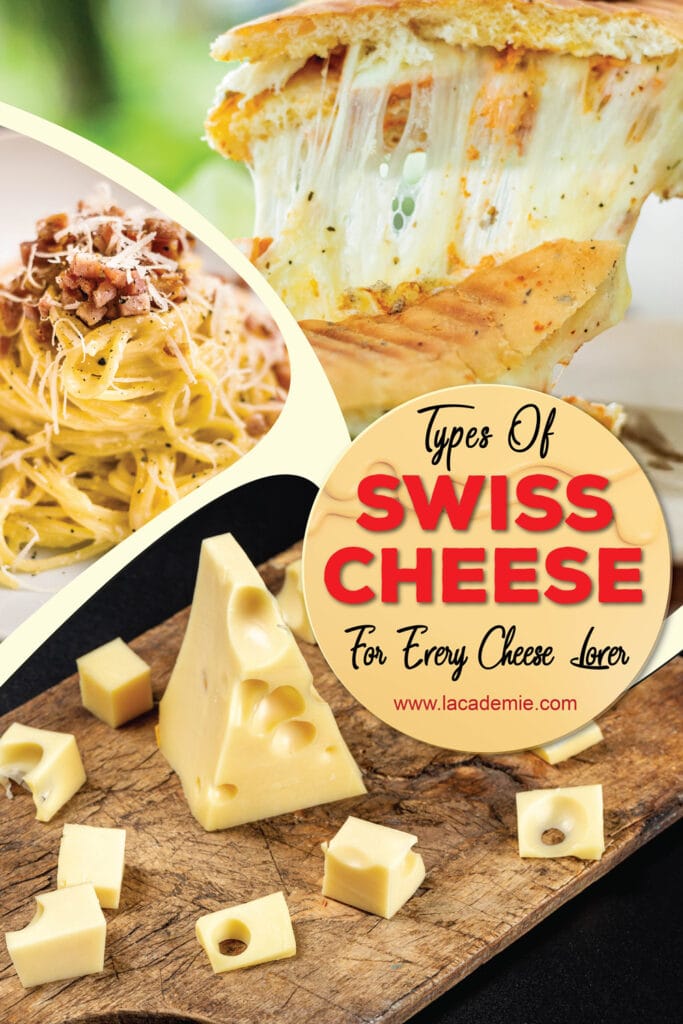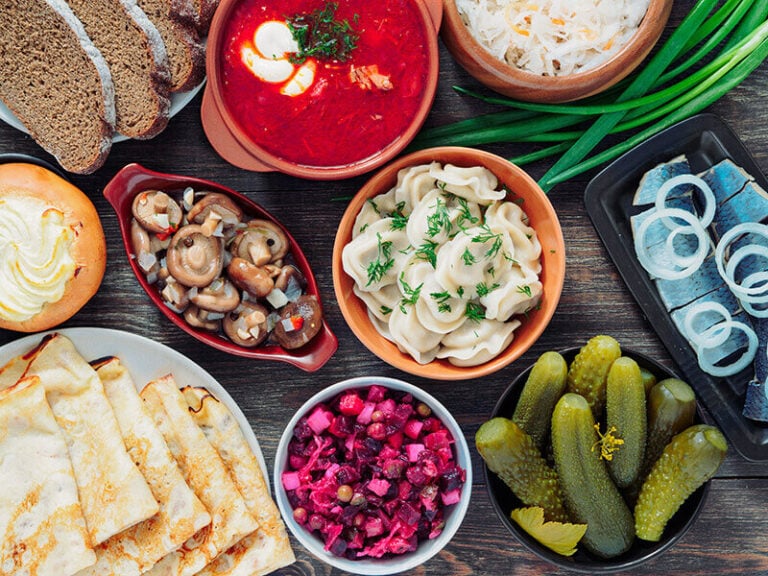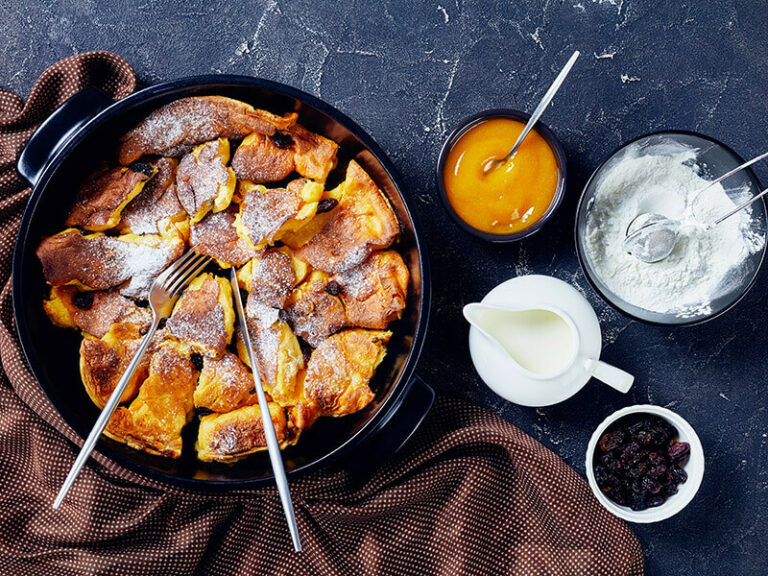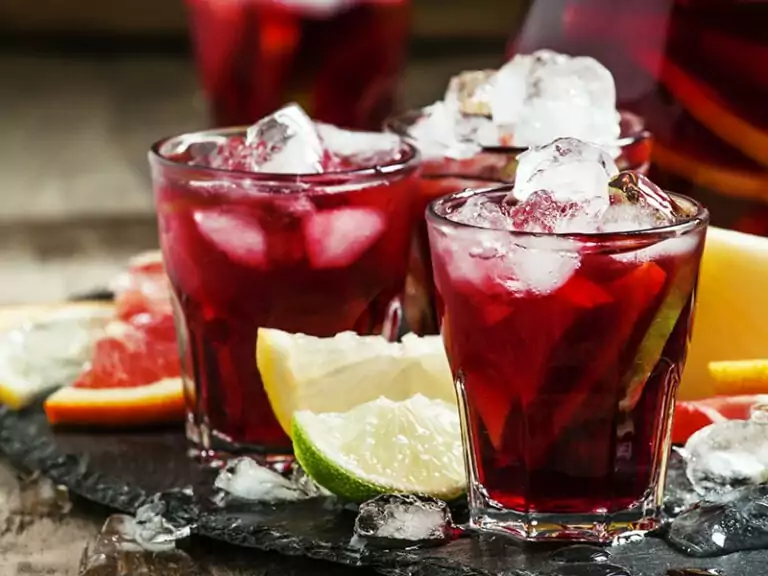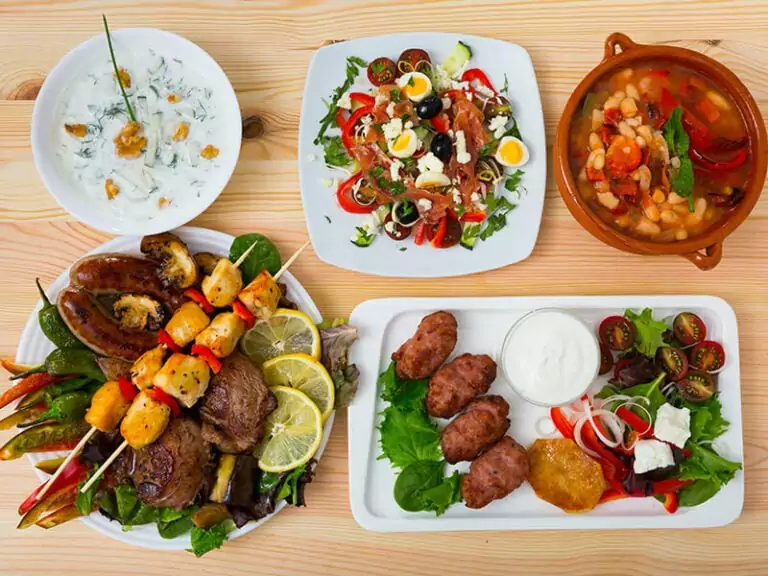Did you know that there are around 475 types of Swiss cheese, which are mostly made from cow’s milk? With such diversity, it’s a shame to see people enjoy gruyère or emmental all the time.
Therefore, I’m here today with plenty of options for you to choose from in case you want a change of pace from those all-American cheeses or want to explore the world of cheese. Scroll down now for appenzeller, raclette, and more to come!

Bring Swiss Cheeses To Your Charcuterie Board Now!
These Swiss cheeses can keep every crowd entertained. Contrary to the funky blue-veined blue cheeses, which often comes with a sharp bite, they are mild and sweet in taste with nutty notes standing out as a highlight.
Now, let’s meet the first, and also the most famous Swiss cheese in this world, the wonderful gruyère!
Note: Some cheeses in the list below are not from Switzerland but France instead. However, they still count as Swiss cheeses and are sometimes referred to as alpine cheese, a style of cheese making.
1. Gruyère (Most Popular Swiss Cheese)
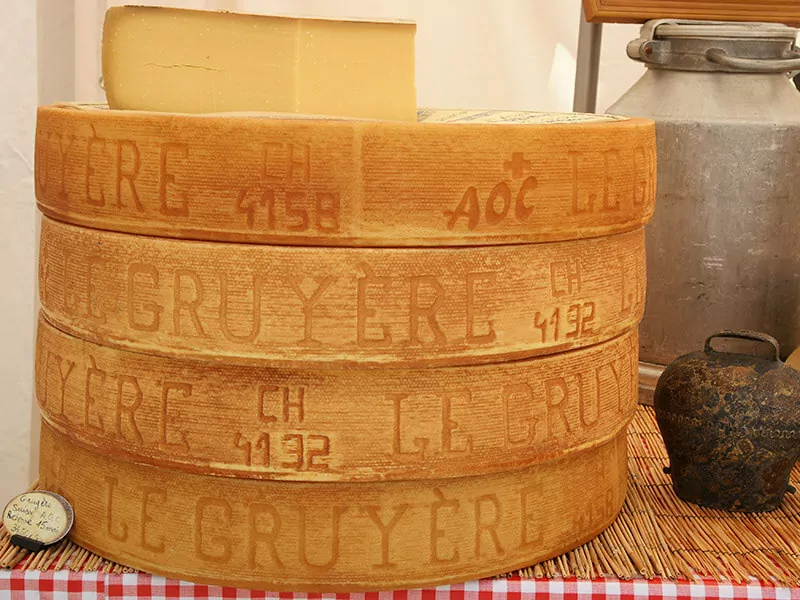
If you have eaten it before, you will admit that gruyère is a game-changer in the kitchen. With its rich, creamy, and nutty taste, the cheese adds more depth to your favorite recipes, turning them into something even more delectable.
Unlike its flavor, the cheese has a wild history. Briefly, there used to be a battle that lasted for about three years between the French and Swiss cheese makers over who deserves to have the CDO (short for “Controlled Designation of Origin”) for gruyère.
Without a doubt, the Swiss won, and the rest is history. The cheese is now an integral part of their daily meal but can be served on its own with a glass of light red wine instead. The flavor combination will leave you speechless.
Highlight Characteristics
Let’s have a closer look at gruyère and its worldwide reputation.
2. Emmental (Second-Most Popular Swiss Cheese)
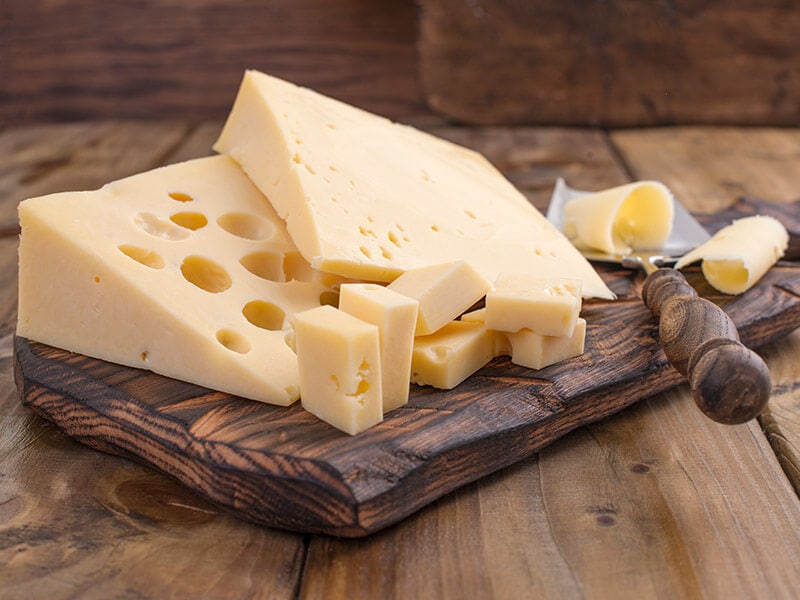
There are over 400 kinds of Swiss cheese, but nothing stands out as much as emmental, or emmentaler, for its one-of-a-kind appearance. There are holes, or eyes all over it, which are formed by a bacteria strain called propionibacter shermani.
Aside from that, the bacteria provide the medium-hard cheese with a sweet, nutty flavor. Its reputation has grown out of Switzerland, even to the degree that almost every Swiss cheese is referred to as Immental. Indeed, this is not true and misleading.
If you want a more intense flavor, go for cheese with large holes since the size of the holes is related to the flavor. Emmental is often used to make fondue, which is also another invention of the Swiss enjoyed during the cold months.
Highlight Characteristics
Here’s why most Swiss cheeses, including Emmental, have holes.
3. Tête de Moine
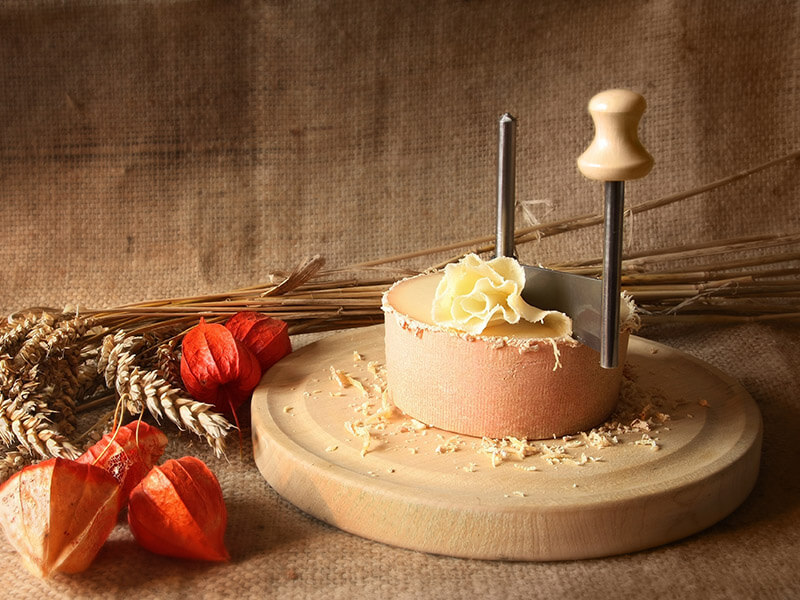
The name of this cheese means “monk’s head,” but no one knows for sure which is the true story behind it. Despite that, the Swiss raw milk cheese is well-known in various parts of the world, adding to different cuisines a whole new taste dimension.
Before consumption, the cheese is left to mature for around 2.5 months. Instead of cutting it into wedges with a high-quality cheese slicer, people will shave it with a special tool called a girolle.
When exposed to air, the cheese releases its lovely aroma, attracting the attention of cheese lovers. It is best paired with crisp white wines like Sauvignon Blanc or Pinot Grigio.
Highlight Characteristics
| Type | Semi-hard |
| Varieties | None |
| Region | Jura |
| Pasteurization | Cow’s milk, unpasteurized |
| Fat Content | 51% |
| Color | Pale yellow |
| Aroma | Aromatic |
| Texture | Smooth and dense |
| Flavor | Buttery and slightly savory |
Learn how to serve tête de moine like a pro using a girolle now!
4. Appenzeller
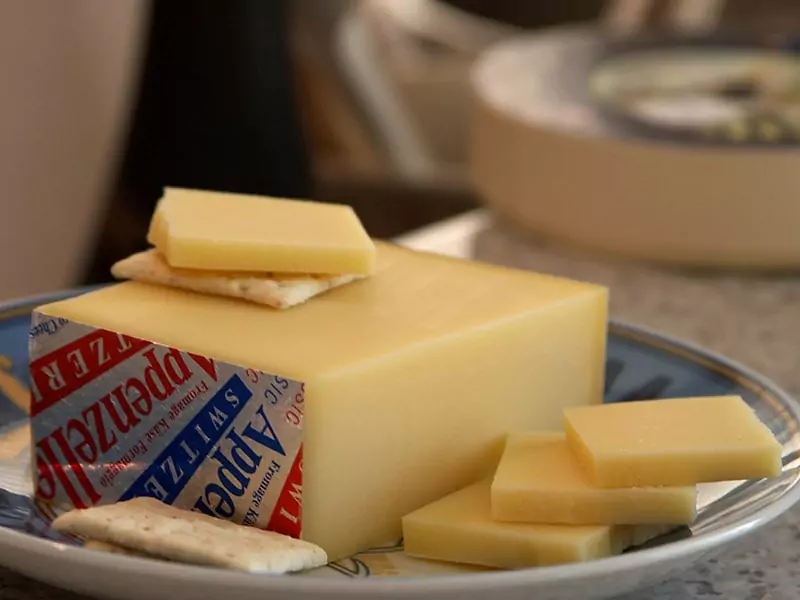
One of the top-notch Swiss cheeses, appenzeller proves that it has no match. The cheese is a product of Appenzell, a peaceful, car-free village with a rich culture, and was first produced in 1902.
The cheese is made from thermized’s cow milk and left to age for about three months. While it is being cured, herbal brine is applied to cheese, resulting in a product with a spicy taste. It can also deliver a tangy kick if wine or cider is blended with the brine.
Appenzeller has several applications, but the Swiss often use it to make fondue, a must-try Swiss dish, whereas the Germans love to have it in their käsespätzle, a pasta dish with melted cheese.
Highlight Characteristics
5. Der Scharfe Maxx
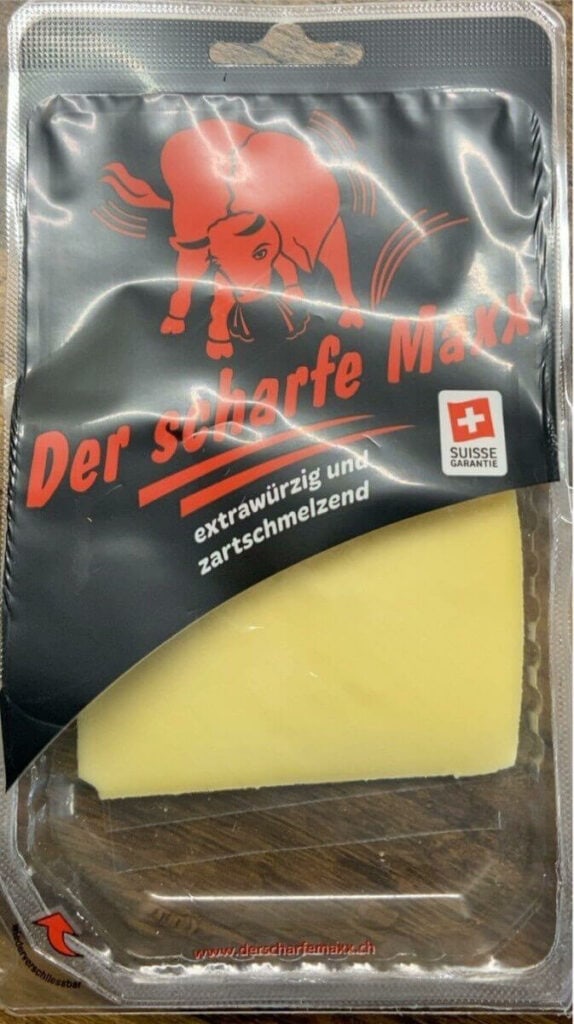
Der Scharfe Maxx can spice up any of your favorite dishes.
Another hard cheese you want to check out is Scharfe Maxx. It is a delicacy produced in the canton of Thurgau and is also made from cow’s milk. The cheese is left to mature for 6 to 9 months.
The cheese opens in your mouth with a mild taste, yet ensures that you will remember it with a sharp finish. If you wish to kick things up a notch, don’t miss out on their variants: the Maxx Extra and the Maxx 365, which takes 9 and 12 months to age, respectively.
Scharfe Maxx takes kindly to many foods. The cheese itself is full of character, so no need to go overboard with the serving options. Just some rye bread, pickles, and eggs, and there’s a delicious brunch!
Highlight Characteristics
6. L’Etivaz
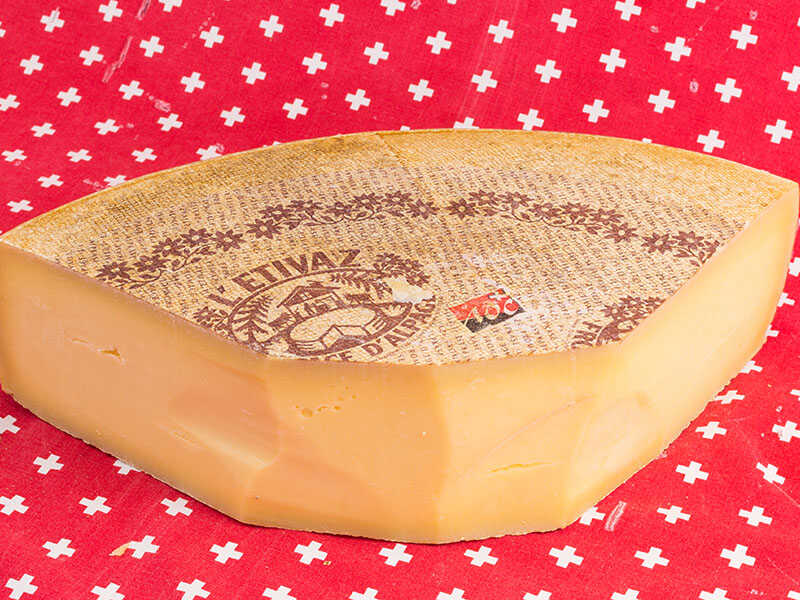
When speaking of the most premium kinds of cheese in this world, I can tell that some will mention l’etivaz. An ancestral style of gruyère, the cheese has managed to make its mark in many parts of Europe with its exquisite flavors.
The coveted cheese is also made from cow’s milk, but what makes it more unique is the fact that the cattle do their summer grazing at a very high altitude. Hence, the finished product is far more flavorful and nutritious.
You won’t be disappointed with the remarkable versatility of l’etivaz. Salami, cured olives, or some fig balls will make a perfect company. For a more well-rounded flavor, opt for the reds with a fruity base.
Highlight Characteristics
| Type | Hard |
| Varieties | None |
| Region | Canton Vaud |
| Pasteurization | Cow’s milk, pasteurized |
| Fat Content | 49% |
| Color | Yellow ivory |
| Aroma | Fragrant |
| Texture | Dense and creamy |
| Flavor | Nutty, fruity, and slightly smoky |
7. Sbrinz (The Oldest European Cheese)
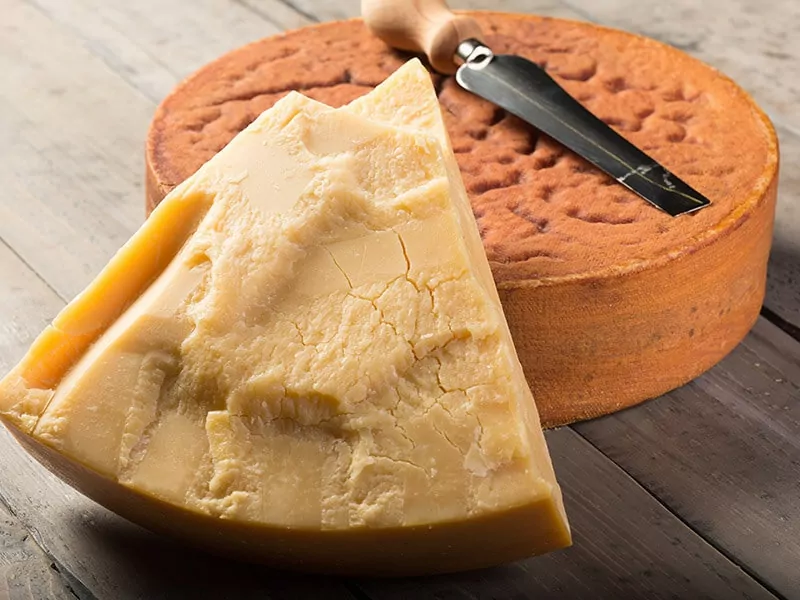
It’s true; Sbrinz is believed to be, if not among the oldest European cheeses. No one can tell exactly its origin place, but the cheese can now be found in regions like Lucerne, Schwyz, or Unterwald.
In case you are curious about the taste of gouda, it is relatively similar to sbrinz except that it lacks the spicy, tangy nuances. When aged over 24 months, the taste becomes more potent, leaving you mesmerized with its aromatics.
With its extra-hard texture, the only and perhaps the best way to use it is to grate it over your favorite pasta. You can also serve it with bread and butter or a glass of pumpkin beer.
Highlight Characteristics
| Type | Hard, artisan |
| Varieties | None |
| Region | Central Switzerland |
| Pasteurization | Cow’s milk, unpasteurized |
| Fat Content | 40-45% |
| Color | Yellow |
| Aroma | Spicy and aromatic |
| Texture | Dense and flaky |
| Flavor | Sweet, nutty, spicy, and tangy |
Treat yourself with a wheel of Sbrinz following this easy guide.
8. Vacherin Fribourgeois (Best For Fondue)
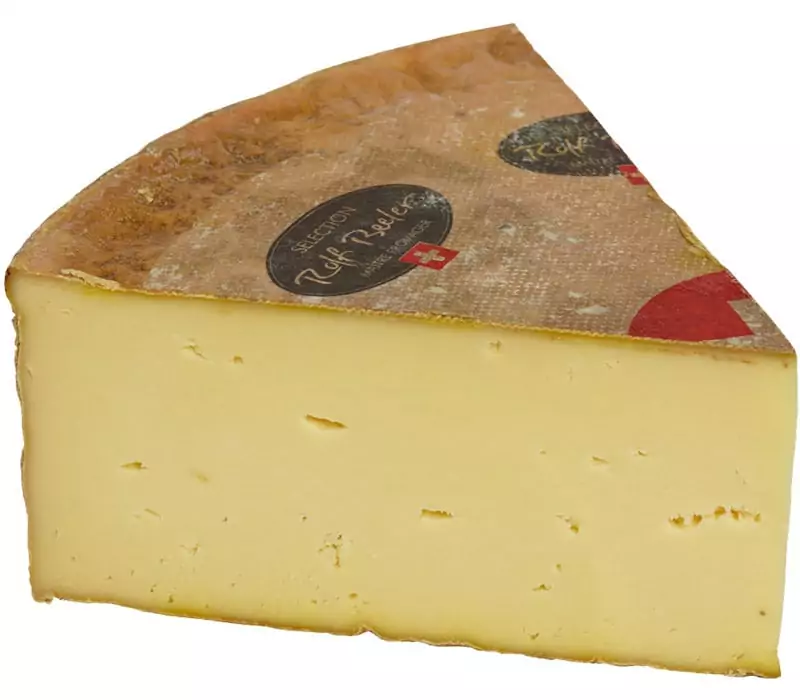
Soft and creamy, Vacherin Fribourgeois takes kindly to endless kinds of food.
The secret to a crowd-pleasing fondue is finally revealed. It is Vacherin Fribourgeois, a dairy product originating from the canton of Fribourg with a high melting point.
It melts beautifully, whether with sandwiches or on a heaping portion of vegetables. Combine it with white wines like Arbois blanc for an even more impeccable taste, if you feel fancy.
With six varieties to choose from, you can be assured that you will find something you prefer. Overall, the cheese has this pleasant nutty flavor propped up with fresh, hay-like undertones. Its stinky aroma may not be too appealing, but it won’t affect the taste too significantly.
Highlight Characteristics
9. Raclette
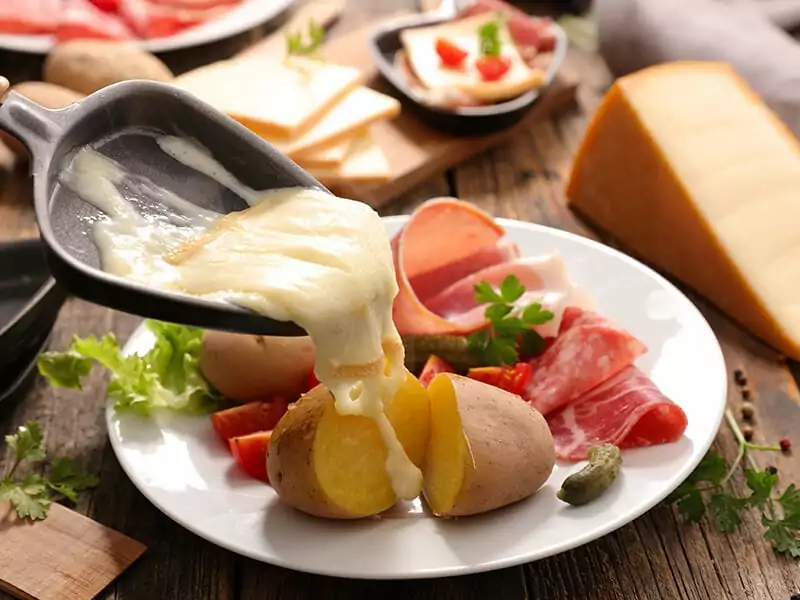
Raceltte’s popularity has grown out of Switzerland for quite a time. These days, you can find it pretty much everywhere, from the streets of London to any local grocery store in your area.
The name of this Swiss cheese is derived from the French verb racler (to grate). This is also how people often prepare the cheese for a potato dish (funnily enough, the dish is known as raclette as well): as it melts, people will scrape the cheese off and let it run over potatoes.
In a bind, you can substitute raclette for gouda and vice versa because their dissimilarities in taste are not too huge. The rich cheese is also a match made in heaven with a glass of Pinot Gris or Sauvignot Blanc, which is refreshing.
Highlight Characteristics
Don’t hesitate to give raclette a try, or you will regret it!
10. Comté (Best For Sandwich)
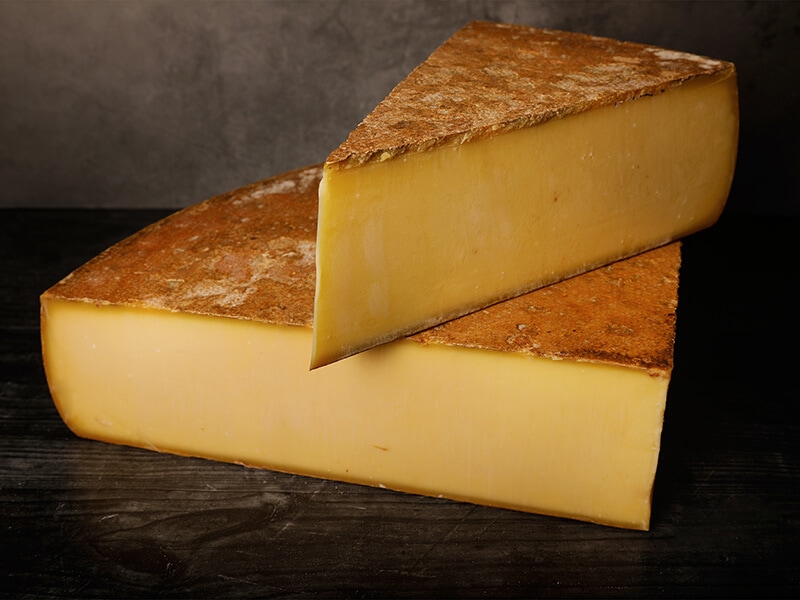
Sometimes written as comte, this alpine cheese is much valued by people not just in but also out of Jura Massif, France. It was one of the first cheeses that gained an AOC status in 1958 and is always in high demand, with at least 40,000 tons being produced per year.
When cut open, the cheese reveals its pale yellow interior with a smooth, silky texture, which melts gently on your tongue. The beauty of this fine cheese also lies in its flavor, which gives your palate an unforgettable experience with sweet and salty undertones.
Serving options will vary depending on the meal of the day. To illustrate, it goes with slices of crispy bacon and ham sandwiches for breakfast.
Highlight Characteristics
| Type | Semi-hard, artisan |
| Varieties | None |
| Region | Jura Massif |
| Pasteurization | Cow’s milk, unpasteurized |
| Fat Content | 45% |
| Color | Pale yellow |
| Aroma | Nutty |
| Texture | Smooth, dense, firm, grainy, and supple |
| Flavor | Sweet, fruity, nutty, salty, savory, and smokey |
Comté is an ideal candidate for some heartwarming fondue in winter.
11. Fontina
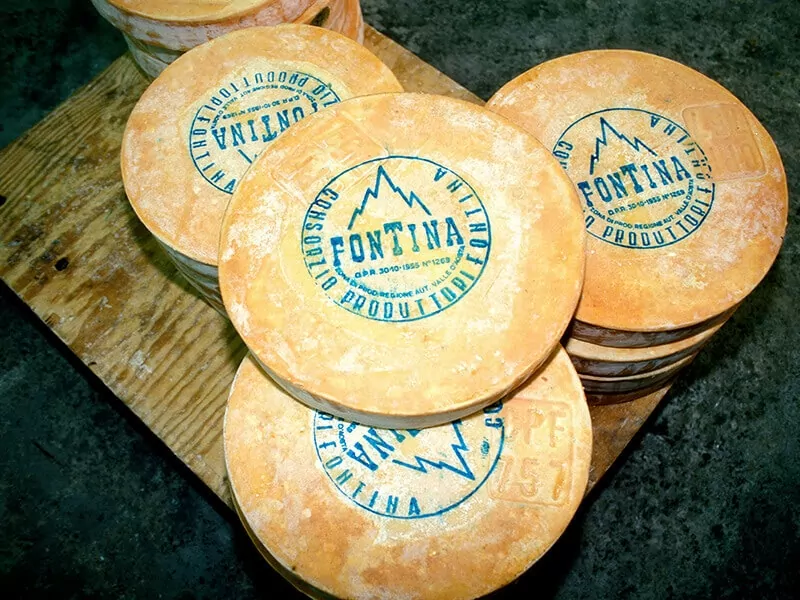
One of the extensively-produced cheeses at the moment, fontina well deserves the spotlight. It has a clean, somewhat mild flavor, which develops and becomes more intense when aged.
Apart from the Val d’Aosta variety (which is the one I’m talking about), there’s Danish fontina, which offers a creamy mouthfeel, and stella fontina from America, a sweet and buttery dairy product full of irregular holes.
Whatever choices you go for, fontina always lives up to the hype. It is recommended that the cheese goes best with Aosta Valley dishes, with an example being Valpelline soup.
Highlight Characteristics
Find out which variety of fontina is worth your penny with this taste test.
12. Beaufort
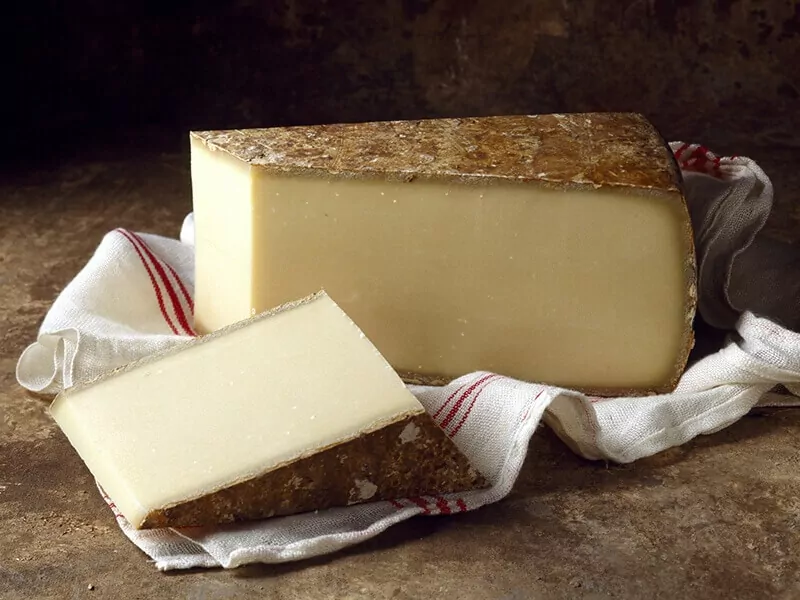
One of the finest cheeses with a history tracing back to the Roman times, beaufort was born with the mission to caress your palate with its pronounced flavor. When sliced open, you will immerse yourself in its milky, pungent aroma, which adds to the cheese’s exquisiteness.
The cheese obtains such flavors from grass-fed cow’s milk, which is heated and shaped with a hoop or mold made of beechwood. After that, it is removed, then pressed, and cooled down for about 24 hours.
As a member of the gruyère family, beaufort melts well, providing your dishes with a boost of flavor. A classic pairing is beaufort and crackers; for something with more depth, you want to try serving it with smoked salmon and fruity wine.
Highlight Characteristics
13. Asiago
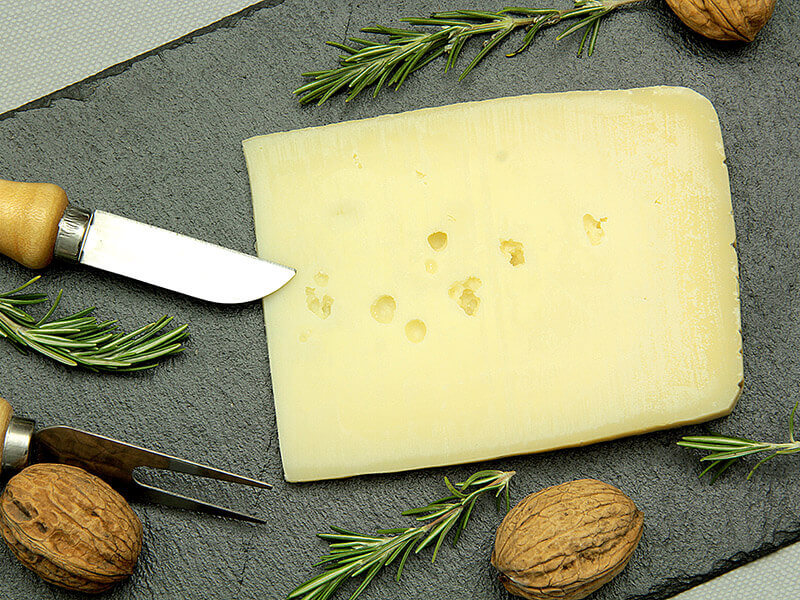
Asiago knows how to steal the spotlight. Whether served on its own or incorporated into your dishes, the cheese takes over with its nutty, creamy flavor profile. It is like parmesan but with a smoother mouthfeel, simply put.
Originally, the production of asiago was mainly associated with sheep’s milk. However, it saw a change to cow’s milk around 1500, resulting in a product with a more pleasant taste.
The cheese really shines when paired with a glass of Zinfandel. Yet, if you are not much of a drinker, consider grating it over your soup and pasta. Asiago can round out the taste of some types of bread and ice cream as well. The options are just countless!
Highlight Characteristics
Your mouth will drool when seeing a wheel of Asiago Pepato, rest easy!
14. Challerhocker
Happy Raw Milk Cheese Day! Holler for #Challerhocker. #RawMilkCheeseAppreciationDay ???????? pic.twitter.com/bDUyG4SYgL
— Foragers (@ForagersNYC) April 16, 2016
Challerhocker was remodeled from Appenzeller with a few modifications, from the aging time to the cooking temperature of the curd. To some, the cheese’s label is rather spine-chilling: it depicts a boy peeking out from a brick wall, which represents the worker in the aging room.
The cheese is washed with brine while aging, which adds to the flavor complexity. Its aromas will remind you of caramel and roasted peanuts with a subtle touch of aging meat. The flavor is sweet and nutty, finishing off your palate with a salted caramel hint you can’t get enough.
Challerhocker prefers no company, but feel free to introduce it to your platter with other types of cheese along with dates, figs, and caramelized onions.
Highlight Characteristics
| Type | Hard |
| Varieties | None |
| Region | Canton of St. Gallen |
| Pasteurization | Cow’s milk, pasteurized |
| Fat Content | 17% |
| Color | Pale yellow |
| Aroma | Sweet and nutty |
| Texture | Creamy, smooth, and dense |
| Flavor | Sweet, caramel, nutty, and salty |
15. Engelberg Cheddar
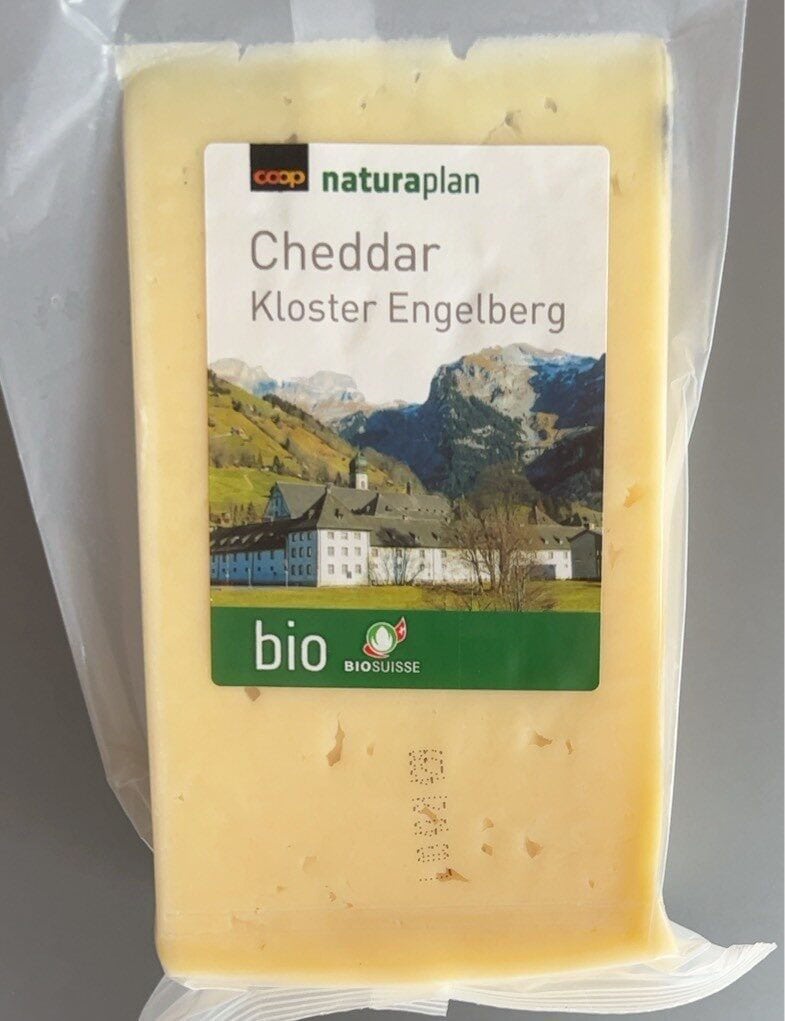
Lastly, you have engelberg cheddar, which is more than just a delicacy. The cheese is made by Walter Grob, who aspires to shake up the status quo in order to be more popular than his local ski resorts.
The devil works hard, but Walter works harder. His creation, engelberg cheddar, was a huge success, making its way to be on everyone’s good book. The cheese takes 5 months to age, resulting in a product with bright notes of citrus mellowed out by a rustic umaminess.
Serve the cheese as it is or with some fresh slices of apples. Its delightful taste can go great with a wide range of high-quality reds, but cheap alternatives like champagne are perfect as well.
Highlight Characteristics
| Type | Smear-ripened |
| Varieties | None |
| Region | Engelberg |
| Pasteurization | Cow’s milk, unpasteurized |
| Fat Content | 45% |
| Color | Ivory yellow |
| Aroma | Mild |
| Texture | Crumbly |
| Flavor | Complex, rich, and creamy |
Are American Swiss Cheeses A Thing?
That’s all about some of the best types of Swiss cheese. Well, you may wonder where those American Swiss cheeses are, but here’s the truth: those cheeses you find in the local market or grocery store are not the real deal.
In truth, they are just American cheeses or at least look like emmental. Manufacturers give it a “Swiss” makeover in order to attract more customers, which is technically false advertising.
Yet, the practice has become so common that even the Americans would call those cheeses Swiss cheese as well. Therefore, when shopping for some top-quality Swiss cheese, ensure that you know the right place to go to and always read the label carefully.
If you happen to know any other Swiss cheese, share it with me via the comment section. In case you have some additional questions, write them down, and I will get back ASAP! Thank you for reading my post!
